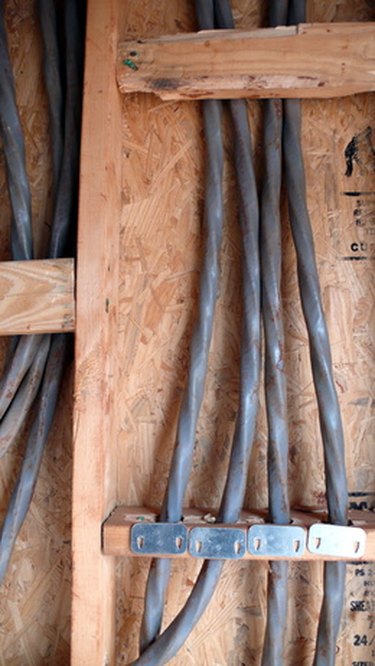
Having surround-sound capability in multiple rooms is a pleasing plus that bolsters the home's resale value. Increasingly, being able to switch DVR and satellite content between TVs in different rooms opens new venues for home-theater surround sound. If you're building a new house, run wire for surround sound along with CAT5 for communications and RG6 coax for video. Go through the studs before the drywall goes up: now is the time. Installing wall-plates where speakers or equipment will go is smart and esthetically pleasing. As long as the right wiring's in place, you can think about the terminals later.
Step 1

Purchase class 2 jacketed speaker cable to be configured in 16-Gauge stranded, twisted pair for lengths 50 ft. or less. Use 14-Gauge for lengths 50 to 100 ft, and 12-Gauge for runs over 100 ft. Run 4-conductor for functional flexibility, especially from equipment closet to each room's volume control. Run 2-conductor to each speaker location. Run CAT5e wiring for infrared control systems.
Video of the Day
Step 2
Measure point-to-point for each run, including one foot extra at each end, and vertical runs. Plan a speaker cable run between proposed equipment locations and every speaker. For 5.1 point surround, plan runs for center, left and right front, as well as left and right rear and subwoofer. If using a powered subwoofer, run line-level wiring.
Step 3
Drill 1-inch holes in every stud along each run, at least two feet away from AC wiring. Audio wire may cross AC wire at 90-degree angles.
Step 4
Cut wire according to measurements in Step 2 and thread it through the studs. Finish each run by fastening the wire bundle to the last stud drilled with a cable tie.
Video of the Day